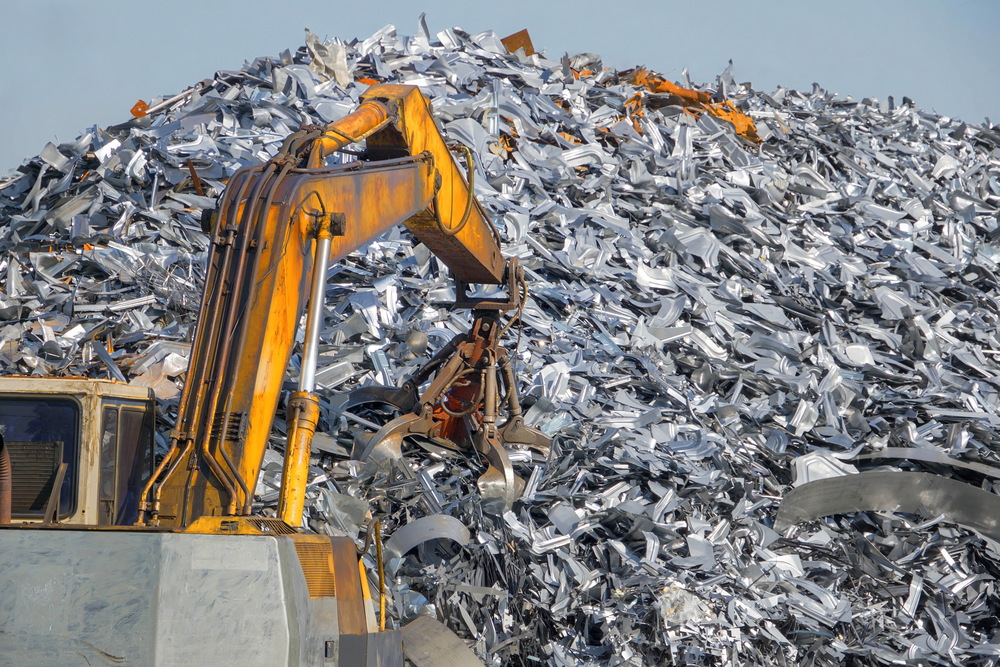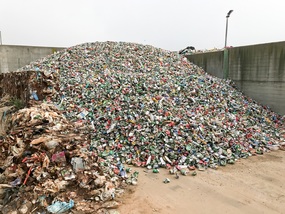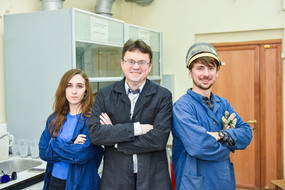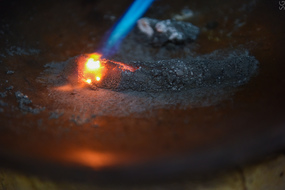A research team from the NUST MISIS Department of Non-Ferrous Metals and Gold led by Professor Alexander Gromov, a visiting researcher from Germany, has developed an industrial method of recycling aluminum and non-ferrous metals for the production of hydrogen as an alternative environmentally-friendly fuel. With this new technology, processing one aluminum soda can (with a volume of .33 liters) will fuel a car for 20 meters.
Aluminum and non-ferrous metals in trash and landfills are the most expensive kind of waste both from a recycling point of view and from the prospect of secondary use. Three factors cause the necessity of sorting and recycling of such waste. First of all, the cost of such metals itself, secondly, it is a disappearing fuel energy enclosed in chemically active metal aluminum, and finally, when storing aluminum scrap, it gradually oxidizes and emits hydrogen into the air — a hazardous chemical reagent.
The Russian market’s production capacity of aluminum containers is estimated to be between
The European secondary aluminum market, which unproductively disengages hydrogen into the atmosphere while storing aluminum waste, is estimated to hold about 9 million tons (European can market report
In countries where aluminum and non-ferrous metals are sorted from other trash, smelting technology is used to create secondary metal. In Switzerland for example, the utilization rate of household aluminum waste reached 90% in 2017. The costs of transporting, cleaning, and smelting, as well as the high toxicity of the resulting toxins, are downsides to this method however.
A research team from NUST MISIS together with their colleagues from the Russian Academy of Sciences has suggested using aluminum waste in alternative green energy as a reagent for the hydrogen generating system: “metallic aluminum — water”. In aluminum and water there is a reaction that releases free hydrogen which later can be burned or oxidized to produce electricity in a fuel cell. The theoretical chemical energy stored in each .33 liter can with a mass of 15 grams is 255 kJ. Expressed in other terms, the 255 kJ of energy is equivalent to 20 meters of a car’s movement with a fuel consumption of 5 liters per 100 km.
“We have developed the scientific basis of environmentally-friendly technology for recycling solid waste containing metal aluminum. This method allows us to obtain chemical energy in the form of hydrogen gas in the process of low-temperature oxidation of aluminum by water. The energy is produced for direct use which will allow scientists to eliminate the stage of compression of explosive hydrogen”, said visiting Professor Alexander Gromov, Doctor of Engineering Sciences and head of the project.
Aluminum itself is an active metal and reacts with oxygen and water slowly even at room temperatures. As a result of oxidation, its surface is covered with a thin oxide-hydroxide film that protects the metal from contact with the oxidizer and stops the process of further oxidation. For this reason, the activation of the oxidation process is necessary for the aluminum oxidation by liquid water in the proposed technological chain. As a solution to this problem, the research team has suggested the mechanoactivation method—a chemical activation of the surface through grinding during the reagent treatment of aluminum waste, which destroys the oxide film.
“Results of previous studies have shown that the kinetics of liquid-phase oxidation of aluminum depends not only on the method of activation of the process but also on aluminum dispersion. We have proposed a system which effectively synchronizes all these parameters and includes the analysis of raw materials, the optimal ways of grinding aluminum waste, the development of mechanisms and modes of oxidation, and the storage and transportation of the resulting solid metal reagent. We have found the optimal reagents for oxidation of aluminum waste and developed the concept of a device for hydrogen production — an analogue of an acetylene carbide generator. The suggested technology is fire-explosion-safe and solves three practical problems: recycling aluminum waste and other hydro reactive metals, obtaining nearly free hydrogen from waste, and actualizing the problem of sorting and separating waste as a whole”, Gromov added.
Hydrogen produced by the oxidation of wastes of metallic aluminum and other non-ferrous metals will be used as fuel in portable power sources, transport systems, and small stationary power plants.
The research article substantiating the new technology is published in Powder Technology journal. Currently, the research team is working on creating an experimental plant and is conducting lab tests on the technology.






